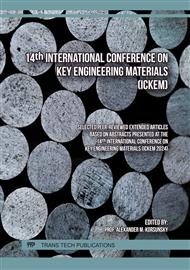p.33
p.45
p.53
p.61
p.67
p.75
p.83
p.93
p.99
A Robust Statistical Analysis of Factors Affecting Interface Bonding between Asphalt Pavement Layers
Abstract:
Interlayer bonding within a multilayered pavement system plays an essential role in the overall performance of the pavement structure. Therefore, studying the interlayer shear strength (ISS) as a major index of the bonding strength and its accurate evaluation is of great importance. The main objective of this research is to assess the ISS of pavement using an experimental and statistically rigorous approach. The results showed that the ISS is highly temperature-dependent, experienced a rapid decline with increasing temperature. As tack coat rate increased, the ISS initially increased to reach a pick at 0.8kg/m2 rate and then started to decline. The ISS demonstrated an almost linear correlation with vertical pressure at all temperature levels. Two-way factorial analysis of variance (FAV) underscored the significant impact of any two, namely temperature (T), tack coat rate (TC), and vertical pressure (VP), on ISS results. However, three-way FAV results indicated that the combined effect of T, TC and VP did not hold statistically significant influence on ISS. Moreover, all ISS models developed in this study were statistically significant at a 0.05 significance level, with a good coefficient of determination (R2 =0.73) for multiple linear regression (MLR) and an excellent R2 of 0.976 for polynomial regression (PR).
Info:
Periodical:
Pages:
67-73
Citation:
Online since:
August 2024
Authors:
Price:
Сopyright:
© 2024 Trans Tech Publications Ltd. All Rights Reserved
Share:
Citation:



